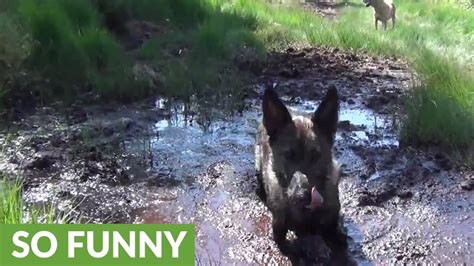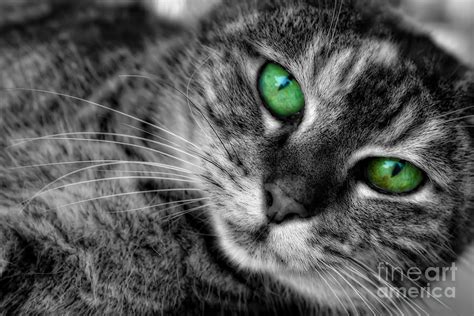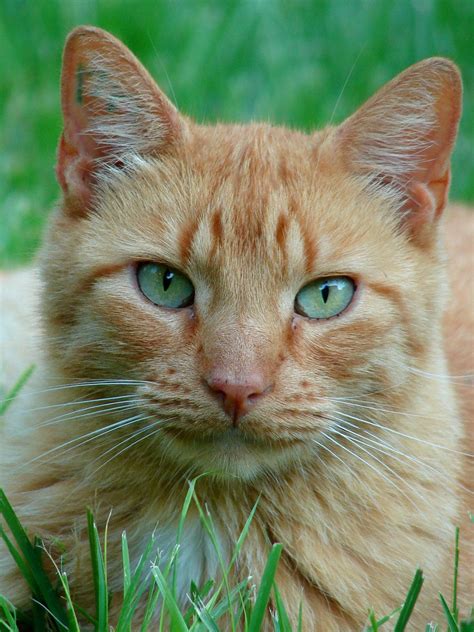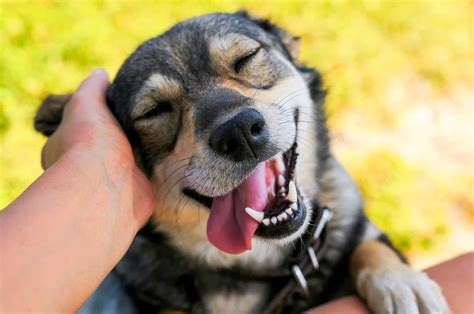
A German Shepherd named Kaiser transformed into an “earthy creature” after indulging in a muddy escapade in his backyard, captivating social media users with his drastic makeover.
Kaiser, a German Shepherd from Oklahoma, recently turned his backyard into his personal spa, emerging covered head-to-toe in thick, gooey mud. His owner, Megan Vaughan, captured the hilarious transformation and shared it on TikTok, where it quickly went viral, garnering millions of views and sparking amusement among dog lovers worldwide. Vaughan recounted her initial shock and amusement upon discovering Kaiser’s mud-caked state, noting that his joyous expression suggested he had no regrets about his muddy adventure. The incident serves as a lighthearted reminder of the playful and often mischievous nature of dogs, and the challenges and joys of pet ownership.
The video shows Kaiser gleefully parading around in his muddy attire, seemingly proud of his earthy makeover. The mud clings to his fur, turning his normally sleek coat into a thick, textured layer of brown. Vaughan’s caption reads, “I think my dog had fun in the backyard today,” accompanied by laughing emojis, capturing the essence of the comical situation. The video resonated with many viewers, who shared similar stories of their own pets’ muddy exploits.
Vaughan explained that Kaiser’s mud bath was entirely his own initiative. “He loves to dig,” she stated, “and we recently had a lot of rain, so the backyard was just a giant mud pit.” She added that Kaiser had never previously engaged in such a thorough mud-covering exercise, making the incident all the more surprising and humorous. The cleaning process, as Vaughan described, was an ordeal, involving multiple washes and considerable effort to remove the caked-on mud from Kaiser’s fur. Despite the extra work, Vaughan expressed that Kaiser’s happiness made it all worthwhile.
Social media users reacted with a mix of amusement and empathy. Many shared their own experiences with mud-loving dogs, while others praised Vaughan for her good-natured response to the situation. Comments ranged from humorous observations about Kaiser’s appearance to practical advice on how to best clean a mud-covered dog. The video became a communal space for dog owners to share their stories and offer support and solidarity in the face of the inevitable messes that come with pet ownership.
This incident highlights the inherent connection between dogs and the natural world, even in a domesticated setting. Kaiser’s uninhibited enjoyment of the mud is a reminder of dogs’ instinctual behaviors and their capacity for finding joy in simple pleasures. It also underscores the importance of understanding and accommodating these natural inclinations, while also setting appropriate boundaries.
The story of Kaiser’s mud bath serves as a reminder of the unpredictable and often humorous moments that make pet ownership such a rewarding experience. It is a testament to the bond between humans and animals, and the ability of pets to bring joy and laughter into our lives, even when they are covered in mud.
Deeper Dive and Context
The phenomenon of dogs enjoying mud is not uncommon and is rooted in several factors. From an evolutionary perspective, mud can serve various purposes for dogs, including temperature regulation, pest control, and scent masking. Wild canids often wallow in mud to cool down in hot weather, to create a barrier against biting insects, or to mask their scent when hunting. While domesticated dogs no longer rely on these behaviors for survival, the instinctual drive to engage in them often remains.
In Kaiser’s case, the freshly soaked backyard provided an ideal environment for indulging these instincts. The cool, wet mud likely felt refreshing on his fur, especially during the warmer Oklahoma weather. Moreover, the act of digging and wallowing in the mud may have provided sensory stimulation and a sense of play. This behavior is consistent with dogs’ natural curiosity and their tendency to explore their environment using all their senses.
However, while mud can be enjoyable for dogs, it also presents certain risks. Mud can contain bacteria, parasites, and other contaminants that can cause skin infections or gastrointestinal issues if ingested. Therefore, it is important for pet owners to ensure that the mud their dogs are playing in is relatively clean and free from harmful substances. Additionally, mud can become matted in a dog’s fur, leading to discomfort and skin irritation. Regular grooming and bathing are essential for preventing these problems.
Beyond the immediate mess, Kaiser’s mud bath highlights broader issues of pet ownership, including the importance of providing adequate enrichment and opportunities for exercise and play. Dogs, especially high-energy breeds like German Shepherds, require regular physical and mental stimulation to prevent boredom and destructive behaviors. A lack of enrichment can lead to frustration and anxiety, which may manifest in undesirable behaviors such as excessive digging or chewing.
Vaughan’s response to Kaiser’s muddy escapade reflects a positive and understanding approach to pet ownership. Rather than scolding Kaiser for his mess, she recognized his joy and addressed the situation with humor and patience. This approach is crucial for building a strong bond with a pet and fostering a positive relationship. It also demonstrates an understanding of dogs’ natural behaviors and the importance of providing them with opportunities to express these behaviors in a safe and appropriate manner.
The viral nature of Kaiser’s video also speaks to the power of social media in connecting pet owners and sharing experiences. The video resonated with many viewers because it captured a universal aspect of pet ownership: the unpredictable and often humorous moments that come with living with animals. It also provided a platform for pet owners to share their own stories and offer support and advice to one another. This sense of community is one of the many benefits of social media, allowing people to connect over shared interests and experiences.
Furthermore, the video underscores the growing recognition of pets as integral members of the family. In many households, pets are treated with the same love and care as children, and their well-being is a top priority. This shift in attitudes towards pets has led to increased demand for pet-related products and services, as well as a greater emphasis on responsible pet ownership.
Kaiser’s mud bath serves as a lighthearted but poignant reminder of the joys and challenges of pet ownership. It is a testament to the bond between humans and animals, and the ability of pets to bring joy, laughter, and a sense of connection into our lives. It also underscores the importance of understanding and accommodating dogs’ natural behaviors, while also providing them with the care and enrichment they need to thrive. The story of Kaiser, the mud-covered German Shepherd, is a reminder that sometimes, the messiest moments are the most memorable.
The Breed and Its Implications
The fact that Kaiser is a German Shepherd adds another layer of understanding to the story. German Shepherds are known for their intelligence, energy, and versatility. They are often used as working dogs in law enforcement, search and rescue, and military operations. However, they are also popular family pets, prized for their loyalty and trainability.
German Shepherds are naturally active and require a significant amount of exercise and mental stimulation to stay healthy and happy. They thrive on having a job to do, whether it is herding sheep, guarding property, or simply playing fetch in the park. Without adequate activity, they can become bored and restless, which may lead to destructive behaviors.
Kaiser’s mud bath can be seen as a manifestation of his natural energy and curiosity. The backyard provided him with an opportunity to explore his environment and engage in playful behavior. While the mud may have been messy, it also provided sensory stimulation and a sense of freedom.
German Shepherds also have a thick double coat, which helps to protect them from the elements. This coat can be both a blessing and a curse. It provides insulation in cold weather, but it can also trap heat in hot weather. Additionally, the thick coat can make it more difficult to clean mud and other debris from their fur.
Vaughan’s efforts to clean Kaiser after his mud bath are a testament to the dedication required to care for a German Shepherd. Grooming a German Shepherd can be a time-consuming process, requiring regular brushing and bathing to keep their coat healthy and free from mats. However, the effort is well worth it, as a well-groomed German Shepherd is a beautiful and impressive animal.
Long-Term Considerations
While Kaiser’s mud bath was a one-time event, it raises important questions about long-term strategies for managing dogs’ natural behaviors in a domestic setting. Pet owners can take several steps to minimize the likelihood of similar incidents and to ensure that their dogs have appropriate outlets for their energy and instincts.
One strategy is to provide dogs with a designated digging area in the yard. This can be a sandbox, a section of the garden, or even a pile of dirt. By providing a specific area for digging, owners can redirect their dogs’ digging behavior away from other areas of the yard.
Another strategy is to provide dogs with plenty of toys and activities to keep them mentally stimulated. Puzzle toys, chew toys, and interactive games can help to prevent boredom and destructive behaviors. Regular walks, runs, and play sessions can also help to burn off excess energy.
Training is also essential for managing dogs’ behavior. Basic obedience commands, such as “sit,” “stay,” and “come,” can help to establish boundaries and control unwanted behaviors. Advanced training, such as agility or obedience classes, can provide additional mental and physical stimulation.
Finally, it is important for pet owners to be patient and understanding. Dogs are not perfect, and they will inevitably make mistakes. Rather than scolding or punishing them for their mistakes, it is important to focus on positive reinforcement and to provide them with the guidance and support they need to succeed.
Ethical Implications and Responsible Pet Ownership
Beyond the immediate amusement and lightheartedness, Kaiser’s mud bath touches upon broader ethical considerations related to responsible pet ownership. Owning a pet is a significant commitment that entails providing for the animal’s physical, emotional, and psychological needs. This includes providing adequate food, shelter, veterinary care, exercise, and mental stimulation.
Responsible pet owners also take steps to prevent their pets from causing harm to themselves, other animals, or the environment. This includes ensuring that their pets are properly vaccinated and protected against parasites, as well as preventing them from roaming freely and potentially causing damage or injury.
In Kaiser’s case, Vaughan’s response to his mud bath demonstrates a commitment to responsible pet ownership. She recognized that Kaiser’s behavior was a natural expression of his instincts and that he was not intentionally trying to cause trouble. Rather than punishing him, she addressed the situation with patience and understanding.
This approach is consistent with the principles of positive reinforcement, which emphasizes rewarding desired behaviors and avoiding punishment. Positive reinforcement is widely recognized as the most effective and humane way to train and manage animals.
Responsible pet ownership also involves being aware of the potential risks associated with certain activities, such as allowing dogs to play in mud. While mud can be enjoyable for dogs, it can also contain harmful bacteria and parasites. Therefore, it is important for pet owners to take precautions to minimize these risks, such as ensuring that the mud is relatively clean and free from contaminants.
Ultimately, responsible pet ownership is about building a strong and mutually beneficial relationship with an animal. It involves understanding their needs, respecting their instincts, and providing them with the care and support they need to thrive.
Expert Opinions on Canine Behavior
To gain a deeper understanding of Kaiser’s behavior, it is helpful to consult with experts in canine behavior. Veterinarians, animal behaviorists, and dog trainers can provide valuable insights into the motivations behind dogs’ actions and offer practical advice on how to manage their behavior.
According to Dr. Stanley Coren, a renowned canine psychologist and author of numerous books on dog behavior, dogs are naturally drawn to mud because it provides sensory stimulation and a way to explore their environment. He explains that the act of digging and wallowing in mud can be both physically and mentally stimulating for dogs.
Dr. Coren also emphasizes the importance of providing dogs with adequate opportunities for exercise and play. He notes that dogs who are not given enough stimulation are more likely to engage in destructive behaviors, such as digging or chewing.
Another expert, Dr. Nicholas Dodman, a veterinary behaviorist and professor emeritus at Tufts University, explains that dogs’ behavior is influenced by a combination of genetics, environment, and learning. He notes that certain breeds are more prone to certain behaviors than others, but that all dogs can benefit from training and socialization.
Dr. Dodman also stresses the importance of understanding dogs’ body language. He explains that dogs communicate through a variety of signals, including facial expressions, body posture, and vocalizations. By learning to read these signals, owners can better understand their dogs’ needs and prevent potential problems.
Dog trainers can also offer valuable insights into canine behavior. They can provide practical advice on how to train dogs to obey commands, manage unwanted behaviors, and build a strong bond with their owners.
By consulting with experts in canine behavior, pet owners can gain a deeper understanding of their dogs’ actions and learn how to provide them with the care and support they need to thrive.
Conclusion
The story of Kaiser’s mud bath is a reminder of the joys and challenges of pet ownership. It is a testament to the bond between humans and animals, and the ability of pets to bring laughter and connection into our lives. It also underscores the importance of understanding and accommodating dogs’ natural behaviors, while also providing them with the care and enrichment they need to thrive. From the initial muddy escapade to the extensive cleaning efforts, this event showcases the dedication and love involved in responsible pet ownership. It also highlights the impact of social media in sharing such moments and creating a community among pet lovers.
The incident serves as a valuable lesson for pet owners, emphasizing the need for patience, understanding, and a willingness to embrace the unpredictable nature of animals. It also underscores the importance of providing dogs with adequate opportunities for exercise, play, and mental stimulation, as well as setting appropriate boundaries and training them to obey commands.
Frequently Asked Questions (FAQ)
1. Why do dogs enjoy playing in mud? Dogs often enjoy playing in mud due to a combination of instinctual and sensory factors. Mud can provide a cooling sensation, especially in warm weather. It also allows them to explore their environment through digging and wallowing, which can be physically and mentally stimulating. Additionally, mud can help mask their scent, a behavior inherited from their wild ancestors. “He loves to dig,” Megan Vaughan said, explaining that recent rain had turned the backyard into “a giant mud pit” which was the main reason for Kaiser’s behavior.
2. Is it safe for dogs to play in mud? While playing in mud can be enjoyable for dogs, it’s essential to ensure the mud is free from harmful substances. Mud can harbor bacteria, parasites, and contaminants that may cause skin infections or gastrointestinal issues if ingested. It’s best to avoid areas with potential pollution or chemical runoff. Regular grooming and bathing after mud exposure are crucial for preventing skin irritation and other health problems.
3. How can I clean my dog after a mud bath? Cleaning a mud-covered dog can be challenging but manageable. Start by rinsing off as much mud as possible with a hose outdoors. Use a dog-specific shampoo to wash away the remaining mud, ensuring to lather and rinse thoroughly. For thick-coated breeds like German Shepherds, multiple washes may be necessary. Towel dry your dog as much as possible and allow them to air dry completely, brushing their fur to prevent matting. Vaughan described the cleaning process as an “ordeal,” involving “multiple washes and considerable effort.”
4. How can I prevent my dog from getting excessively muddy? Preventing excessive mud exposure involves managing your dog’s access to muddy areas. During wet weather, limit unsupervised time in the yard or confine them to paved areas. Provide alternative activities, such as indoor games or puzzle toys, to keep them entertained. Consider creating a designated digging area with sand or soil to redirect their digging behavior away from muddy spots.
5. What are the potential health risks associated with mud exposure in dogs? Mud exposure can pose several health risks to dogs. Bacteria and parasites in the mud can cause skin infections, such as dermatitis, or gastrointestinal issues if ingested. Additionally, mud can trap allergens and irritants, leading to allergic reactions. Regularly inspect your dog’s skin for signs of irritation or infection and consult a veterinarian if any concerns arise. Proper hygiene and preventive measures are crucial for minimizing these risks.









